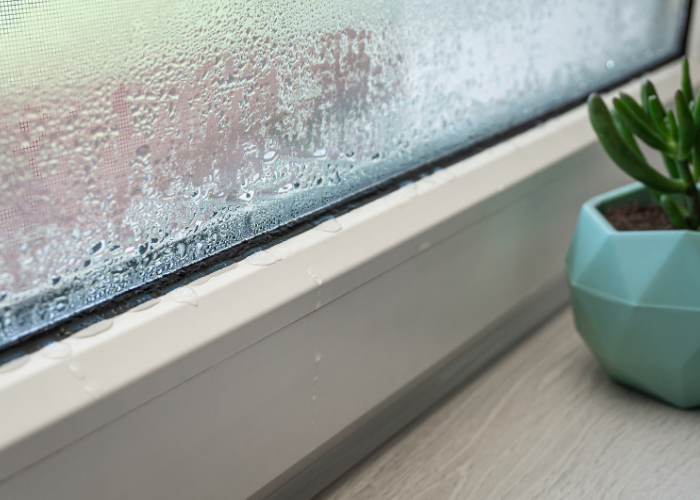How to Stop Condensation on Windows: During colder seasons many UK homes experience condensation on their windows. While it might appear insignificant, unchecked condensation can create mold growth and damage window frames as well as reduce indoor air quality. This post explains the causes of window condensation and demonstrates practical methods to prevent it.
What Causes Window Condensation?
When warm air containing moisture touches a cold surface like a windowpane, condensation happens. Water droplets form when the temperature difference between the air and a surface forces air moisture to condense. High humidity levels make condensation common in kitchens, bathrooms, and bedrooms.
Why It’s Important to Prevent Condensation
When condensation first appears as a minor issue it can escalate into:
– Mould and mildew growth
– Rotting wooden window frames
– Peeling paint or wallpaper
– Poor air quality and potential health risks
If you learn how to prevent window condensation, you can ensure both better health and increased comfort in your home.
Practical Solutions to Prevent Window Condensation
1. Improve Ventilation
– Increasing airflow throughout your home presents the best solution for handling condensation problems. The action lowers humidity levels and stops the accumulation of damp air.
– Periodically open windows to allow fresh air movement through your home.
– Use extractor fans in bathrooms and kitchens
– Install trickle vents or air bricks to create controlled airflow in your home.
2. Use a Dehumidifier
– A dehumidifier operates as an uncomplicated yet successful device which eliminates excessive water content from the atmosphere. Dehumidifiers prove invaluable during winter months when window ventilation becomes impractical.
– Use a dehumidifier in areas with the most noticeable condensation during nighttime hours.
3. Keep Your Home Warm
– By sustaining constant indoor temperatures you minimize the likelihood of warm air coming into contact with cold surfaces. Operate your central heating system intelligently to maintain consistent warmth throughout your home at all times.
– Consider adding thermal curtains or upgrading to double-glazed windows to maintain warmer window surfaces.
4. Avoid Drying Clothes Indoors
– Laundry drying inside your home significantly increases indoor air moisture levels. Outdoor clothes drying is recommended whenever feasible or use a tumble dryer that vents outside. When indoor drying of clothes becomes necessary, use a well-ventilated space with either an open window or a running dehumidifier.
5. Install Air Conditioning with Humidity Control
– Air conditioning systems today serve multiple functions including both temperature control and indoor humidity regulation. BG Air Conditioning supplies superior air conditioning units that include humidity control features to minimize condensation and enhance indoor air quality.
We make personalized system recommendations for your property after a detailed assessment by our qualified technicians.
When to Seek Professional Help
Visible mould appearing alongside persistent condensation might reveal deeper ventilation problems. Professional inspections enable experts to discover the underlying cause of problems and develop permanent solutions.
Final Thoughts: How to Stop Condensation on Windows
Stopping window condensation helps maintain your home’s integrity while ensuring clean indoor air and minimizing health hazards. Effective solutions to this problem include enhancing ventilation systems or using a dehumidifier and installing a smart air conditioning system.
BG Air Conditioning works with homeowners throughout Essex and surrounding areas to provide healthier and more comfortable living spaces. Contact our welcoming team now to learn about our air conditioning solutions which stop condensation while enhancing indoor air quality.
